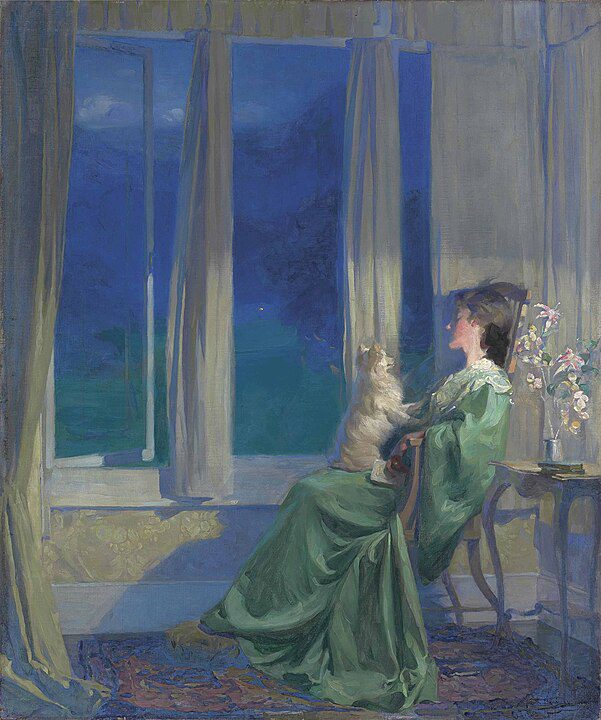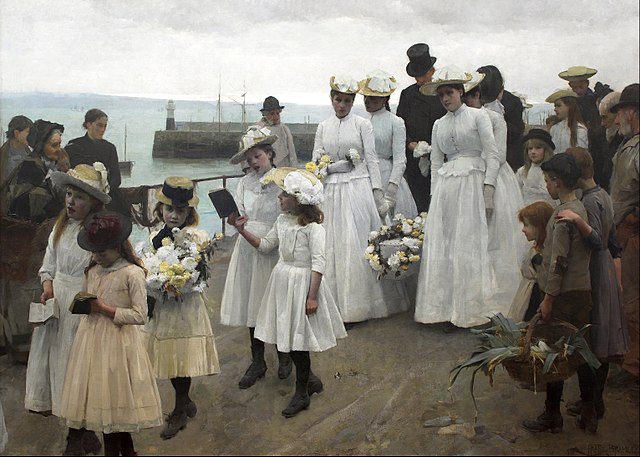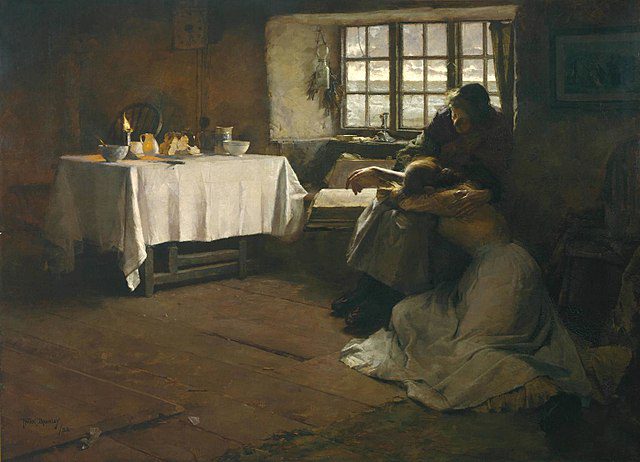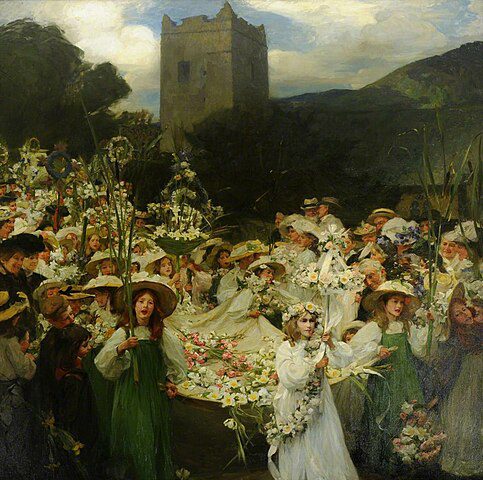
Frank Bramley, born on May 6, 1857, in Sibsey, Lincolnshire, England, emerged as a distinguished painter of the late 19th and early 20th centuries, celebrated for his evocative and emotionally resonant depictions of everyday life. His artistic journey, marked by a commitment to capturing the nuances of human relationships and the beauty in ordinary moments, left an enduring legacy in the annals of British art.
Bramley’s early life was characterized by a fascination with the arts, and his talent became evident at a young age. Recognizing his potential, his parents supported his artistic inclinations, and at the age of sixteen, he enrolled at the Lincoln School of Art. There, under the guidance of Thomas Blake Wirgman, Bramley honed his technical skills and developed a profound appreciation for the academic principles of art.
Going to london
In 1873, Bramley made a pivotal decision that would shape his artistic trajectory. He moved to London to attend the Royal Academy Schools, a move that exposed him to the vibrant artistic milieu of the capital. Studying alongside notable contemporaries such as Stanhope Forbes, another prominent figure in the Newlyn School, Bramley immersed himself in the progressive and innovative artistic discussions of the time.

In 1882, Bramley found himself drawn to the picturesque coastal village of Newlyn in Cornwall, a burgeoning artist colony that would become synonymous with the Newlyn School. This move marked a significant turning point in his career, as the idyllic landscapes and the close-knit community of artists provided fertile ground for the exploration of themes that would become central to his oeuvre.
Bramley’s early works, often set against the backdrop of the quaint fishing village, reflect a keen interest in the interplay of light and color. His attention to detail and the meticulous rendering of scenes showcased his technical prowess, earning him acclaim within artistic circles. “A Hopeless Dawn,” painted in 1888, stands out as one of his early masterpieces, capturing the stark beauty of a dawn-lit seascape and foreshadowing the emotional depth that would characterize his later works.
intimate and emotive
As Bramley continued to evolve as an artist, he delved into themes that went beyond mere aesthetics. His interest shifted towards the intimate and emotive aspects of human relationships, leading to the creation of some of his most celebrated works. “For of Such is the Kingdom of Heaven,” painted in 1891, is a poignant portrayal of a bereaved family seeking solace in the aftermath of tragedy. The painting, exhibited at the Royal Academy, garnered widespread acclaim for its emotional resonance and compassionate portrayal of human suffering.

The Newlyn School, including Bramley, became known for its commitment to social realism and the portrayal of everyday life. This approach marked a departure from the prevailing academic traditions, as artists sought to capture the authentic experiences of the working-class and rural communities. Bramley’s works, characterized by a sense of empathy and compassion, became emblematic of this movement.
In 1895, Frank Bramley married fellow artist Katherine Graham, herself a talented painter associated with the Newlyn School. Their union not only marked a personal milestone but also brought forth a period of creative collaboration. The couple’s works often explored shared themes, and their artistic partnership contributed to the cultural richness of the Newlyn School.
Weight of the war
While Bramley’s reputation continued to grow, tragedy struck with the outbreak of World War I. Bramley, deeply affected by the human toll of the conflict, took on the role of an Official War Artist. His task was to document the impact of the war on the home front, a responsibility that weighed heavily on his shoulders. The emotional toll of witnessing the suffering and sacrifice during wartime found expression in his later works, reflecting a more somber and reflective tone.
Frank Bramley passed away on August 9, 1915, at the age of 58. His legacy, however, endures through the canvas of his art. His contributions to the Newlyn School and the broader artistic landscape of his time are commemorated in exhibitions and retrospectives that continue to celebrate the emotional depth and technical brilliance of his work.

Bramley’s ability to infuse ordinary scenes with profound meaning, his commitment to social realism, and his dedication to the exploration of the human experience have left an indelible mark on the history of British art. In every stroke of his brush, Frank Bramley captured the timeless essence of life, inviting viewers to reflect on the beauty found in the subtleties of existence.




